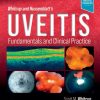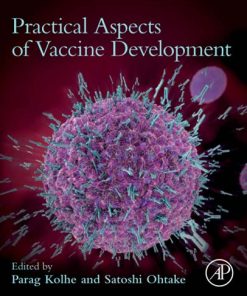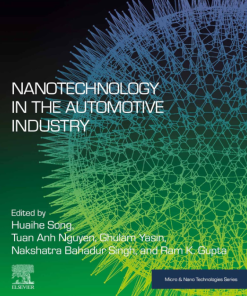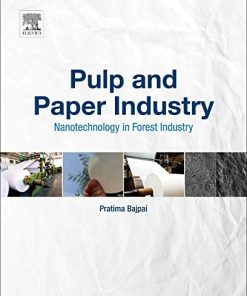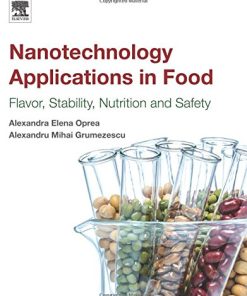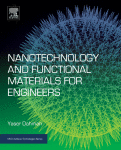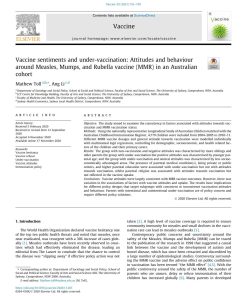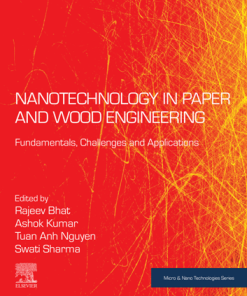(Ebook PDF) Micro and Nanotechnology in Vaccine Development 1st Edition by Mariusz Skwarczynski 0323400299 9780323400299 full chapters
$50.00 Original price was: $50.00.$25.00Current price is: $25.00.
Micro and Nanotechnology in Vaccine Development 1st Edition by Mariusz Skwarczynski – Ebook PDF Instant Download/DeliveryISBN: 0323400299, 9780323400299
Full download Micro and Nanotechnology in Vaccine Development 1st Edition after payment
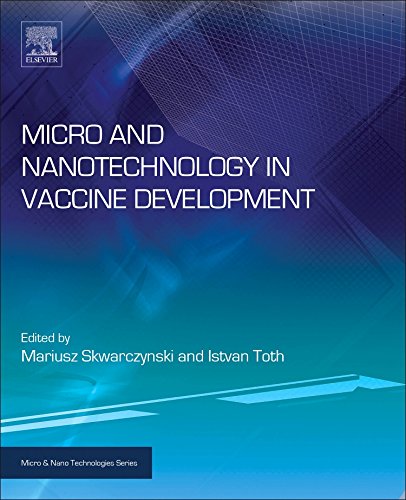
Product details:
ISBN-10 : 0323400299
ISBN-13 : 9780323400299
Author: Mariusz Skwarczynski
This book provides a comprehensive overview of how use of micro- and nanotechnology (MNT) has allowed major new advance in vaccine development research, and the challenges that immunologists face in making further progress.
MNT allows the creation of particles that exploit the inherent ability of the human immune system to recognize small particles such as viruses and toxins. In combination with minimal protective epitope design, this permits the creation of immunogenic particles that stimulate a response against the targeted pathogen. The finely tuned response of the human immune system to small particles makes it unsurprising that many of the lead adjuvants and vaccine delivery systems currently under investigation are based on nanoparticles.
Micro and Nanotechnology in Vaccine Development 1st Table of contents:
Chapter One: The Growing Influence of Nanotechnology in Our Lives
Abstract
1.1. Nanomaterials and Fabrication Techniques
1.2. Nanomaterials in Modern Life
1.3. Conclusions
Chapter Two: Nanotechnology in Medical Research
Abstract
2.1. Introduction
2.2. Diagnostic Nanoparticles
2.3. Therapeutic Nanoparticles
2.4. Multimodal Nanoparticles
2.5. In Development
Chapter Three: Introduction to Vaccines and Vaccination
Abstract
3.1. Introduction to Vaccines and Vaccination
3.2. Challenges
3.3. Conclusions
Chapter Four: Overview of the Immune System
Abstract
4.1. A Short History of Immunology
4.2. Immune Responses to Infection
4.3. Innate Immunity
4.4. Induced Innate Immune System
4.5. The Adaptive Immune System
4.6. Cells of the Adaptive Immune System
4.7. Immunoglobulin Classes and Function
4.8. Blurring the Lines Between Innate and Adaptive Immunity
4.9. Concluding Remarks
Chapter Five: The Role of Antigen Presentation and Innate Immunity During Immune Induction by Particulate Antigens
Abstract
5.1. Introduction to Vaccine Adjuvants
5.2. The Innate Immune System as a Regulator of Adaptive Immunity
5.3. Nanoparticle Vaccine Delivery Systems
5.4. Targeting APCs at the Site of Vaccination and in the Draining Lymph Node
5.5. Concluding Remarks
Chapter Six: Inflammatory/Noninflammatory Adjuvants and Nanotechnology—The Secret to Vaccine Design
Abstract
6.1. Current Challenges Facing Vaccine Design
6.2. Inflammation: Angel or Devil?
6.3. Adjuvant Selection for Vaccine Design
6.4. Mechanisms of Conventional Adjuvants
6.5. Noninflammatory Adjuvants: Introducing Nanoparticles as Vaccine Adjuvants
Summary
Chapter Seven: Vaccine Adjuvant Nanotechnologies
Abstract
7.1. Introduction
7.2. Emulsion Adjuvants
7.3. Microparticulate Polysaccharide Adjuvants
7.4. Immune Targeting Strategies
7.5. Innate Immune Receptor Ligands
7.6. Template-Based Nanoparticle Manufacturing Methods
7.7. Conclusions
Chapter Eight: Nanoparticle-Based Peptide Vaccines
Abstract
8.1. Introduction
8.2. Vaccine Components
8.3. Utility of Synthetic Peptides for Subunit Vaccines
8.4. Upsizing Peptide Antigens
8.5. Lipopeptide-Based Nanovaccines
8.6. Self-Assembling Peptides
8.7. Concluding Remarks
Acknowledgments
Chapter Nine: Microparticles and Nanoparticles for Cancer-Targeting Vaccines
Abstract
9.1. Introduction
9.2. Conclusions
Chapter Ten: Polymer-Based Nanoparticles as Modern Vaccine Delivery Systems
Abstract
10.1. Introduction
10.2. Immune Defense Mechanisms: From Innate to Adaptive Immunity
10.3. Design of Polymeric Nanovaccines
10.4. Polymers Used for Nanovaccine Design
10.5. Routes of Administrations
10.6. Polymer-Based Nanoparticles in Clinical Trials
10.7. Conclusions and Future Perspectives
Acknowledgments
Chapter Eleven: Virus-Like Particles
Abstract
11.1. Introduction
11.2. Conclusions
Chapter Twelve: Liposomes as a Vaccine Delivery System
Abstract
12.1. Vaccines and Vaccinations
12.2. Liposomes: A Brief Introduction
12.3. Influence of Liposome Size and Surface Charge on Vaccine Responses
12.4. Types of Liposomes
12.5. Methods of Liposomal Manufacturing
12.6. Size Manipulation
12.7. Factors to Consider for Scaling Up of Vaccine Production
12.8. Conclusions
Chapter Thirteen: Nanomaterials Based on Lipids for Vaccine Development
Abstract
13.1. The Importance of Particles As Adjuvants
13.2. Lipid-Covered Particles and Bilayer Fragments As Adjuvants
13.3. Lipidic Immunostimulants and Solid Lipid Nanoparticles
13.4. Conclusions
Acknowledgments
Chapter Fourteen: Microparticles for Vaccine Delivery
Abstract
14.1. Introduction
14.2. Conclusions
Chapter Fifteen: Nasal Vaccine Delivery
Abstract
15.1. Introduction
15.2. The Nasal Route
15.3. Immune Response to Mucosal Infection
15.4. Nasal Vaccine Delivery Systems
15.5. Different Dosage Forms of Vaccine Through the Nasal Route
Summary
Chapter Sixteen: Toward Mucosal DNA Delivery: Structural Modularity in Vaccine Platform Design
Abstract
16.1. Introduction
16.2. Discovery and Critical Landmarks in HEV Biology
16.3. HEV Biology and the Capsid Protein
16.4. Life Cycle of HEV Makes it Amenable to Being Used as an Orally Delivered Drug
16.5. Virus-like Particles as Drug Delivery Systems/Vaccine Epitope Carriers
16.6. HEV VLPs are Well Suited as Nanocarriers for Oral Delivery
Acknowledgments
Chapter Seventeen: Nano- and Microtechnology in Skin Delivery of Vaccines
Abstract
17.1. Introduction
17.2. Immunization via Skin
17.3. Nano/Microvaccination Techniques for Skin Delivery
17.4. Concluding Remarks
Chapter Eighteen: Nanopatches for Vaccine Delivery
Abstract
18.1. The Context of the Mechanical Vaccination Devices
18.2. Designing a Device to Reach Precise Locations in Skin
18.3. Immune Responses to and Hypothesized Mechanisms of the Nanopatch
18.4. Thermostability of Vaccine Coating
18.5. Clinical/Medical Device Technology Implications
18.6. Conclusions
Chapter Nineteen: Rationale for Pulmonary Vaccine Delivery: Formulation and Device Considerations
Abstract
19.1. Introduction
19.2. Anatomy of the Human Lung
19.3. Pulmonary Mucosal Vaccination
19.4. Rationale for Pulmonary Delivery of Vaccines
19.5. Challenges in Delivery of Vaccines via Inhalation
19.6. Carriers for Lung Vaccine Delivery
19.7. Dry Powder Vaccines
19.8. Conclusions
Chapter Twenty: Nanotoxicology and Nanovaccines
Abstract
20.1. Introduction
20.2. General Toxicological Pathways for Nanoparticles
20.3. Acute and Chronic Toxicity
20.4. Toxicology of Nanovaccines
20.5. Concluding Remarks
Chapter Twenty One: Regulatory Development of Nanotechnology-Based Vaccines
Abstract
21.1. Introduction
21.2. Current State of Nanomedicine Regulatory Framework
21.3. Major Aspects for Nanovaccine regulation
21.4. Nanovaccine Major Features and Related Concerns
21.5. Current Challenges for the Translation of Nanovaccines to Clinic Use
21.6. Conclusions and Future Perspectives
Acknowledgments
Chapter Twenty Two: Commercial Aspects of Vaccine Development
Abstract
22.1. Introduction
22.2. Challenges in Commercialization of Micro- and Nanotechnology Therapeutics
22.3. Challenges in Commercialization of Vaccines
22.4. Conclusions
People also search for Micro and Nanotechnology in Vaccine Development 1st:
tu ilmenau micro and nanotechnology
queensland micro and nanotechnology centre
holonyak micro and nanotechnology laboratory
mphil in micro and nanotechnology enterprise
master of science in micro and nanotechnology
Tags:
Micro,Nanotechnology,Vaccine Development,Mariusz Skwarczynski
You may also like…
Medicine - Immunology
Chemistry - Chemistry - General & Miscellaneous
Uncategorized
Uncategorized



